Although it would be nice if we could all have enormous gardens with sweeping lawns and borrowed views, for most of us this isn't the case. In a majority of gardens there will be fencing separating your property from that of your neighbours or the public space beyond.
Some fences can be decorative and add form to the garden, however they are often simply used to mark boundaries and need a bit of help to add anything to the aesthetic of the space.
Growing plants on the fence line is a great way of covering an ugly fence, adding height to your garden and increasing your growing space. Here we recommend some of the best plants to use for this.
Best plants for fence line in 2024
Climbing plants for a fence line
Clematis montana 'Elizabeth'

There are many varieties of clematis, and almost all of them are great plants for fence lines. Clematis montana 'Elizabeth' is particularly popular as it has very vigorous growth.
In spring, 'Elizabeth' produces a mass of scented pale pink flowers against bronzed trifoliate leaves which would easily brighten up a garden fence. They are also tolerant of a wide range of soils, and like their roots to be slightly shaded which makes them a great plant for fence lines. This plant has an RHS Award of Garden Merit too.
Actinidia kolomikta

Actinidia kolomikta, also known as a kiwi vine, makes for an excellent fence line plant due to its striking foliage. It is a vigorous climber that has twining stems, so will need some support with climbing from either a trellis or some wiring.
The ovate leaves on mature plants are tipped with silver and later with vibrant pink. These plants like to be in a sunny spot so would be perfect for a south-facing fence. They also produce white flowers in summer but are predominately grown as a foliage plant.
Lonicera
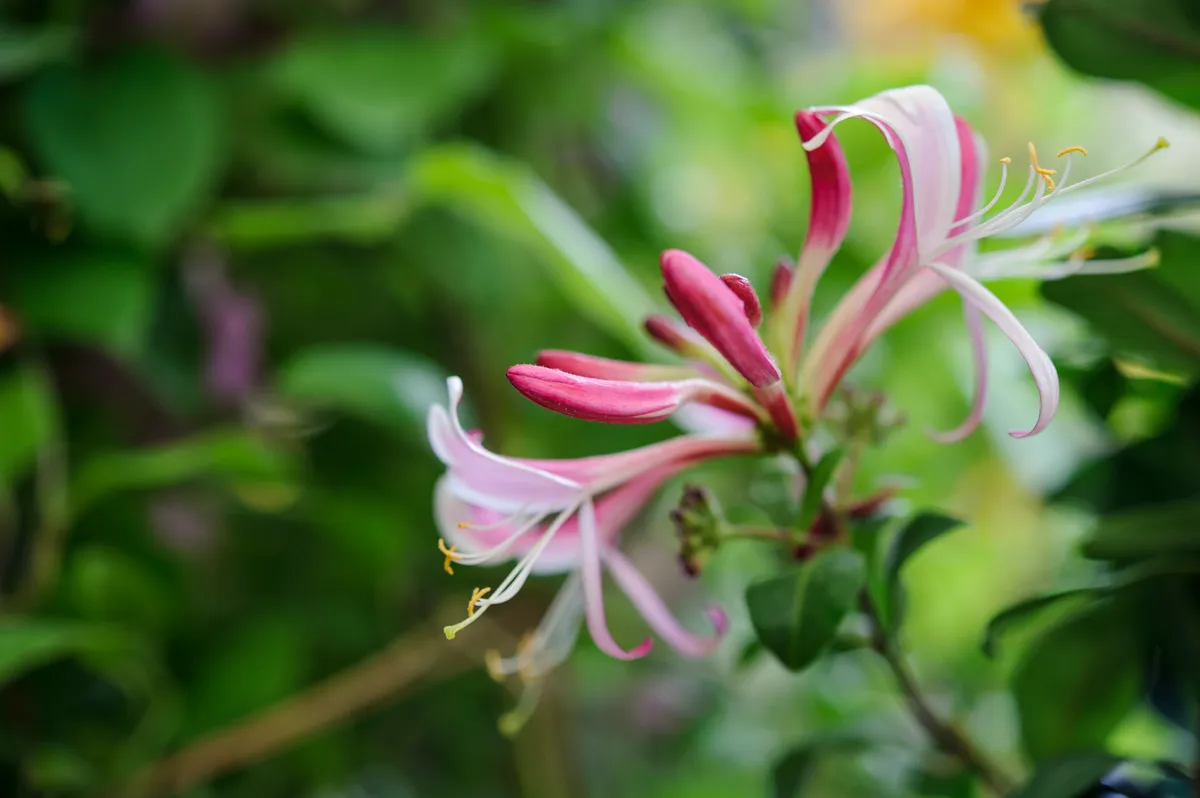
Lonicera, or honeysuckle, are some of the best plants for fence lines. There are lots of different varieties to choose from and not only do they provide beautiful flowers, many of them also have an amazing scent too.
Rosa banksiae 'Alba Plena'
Buy from Thompson & Morgan (£39.99).
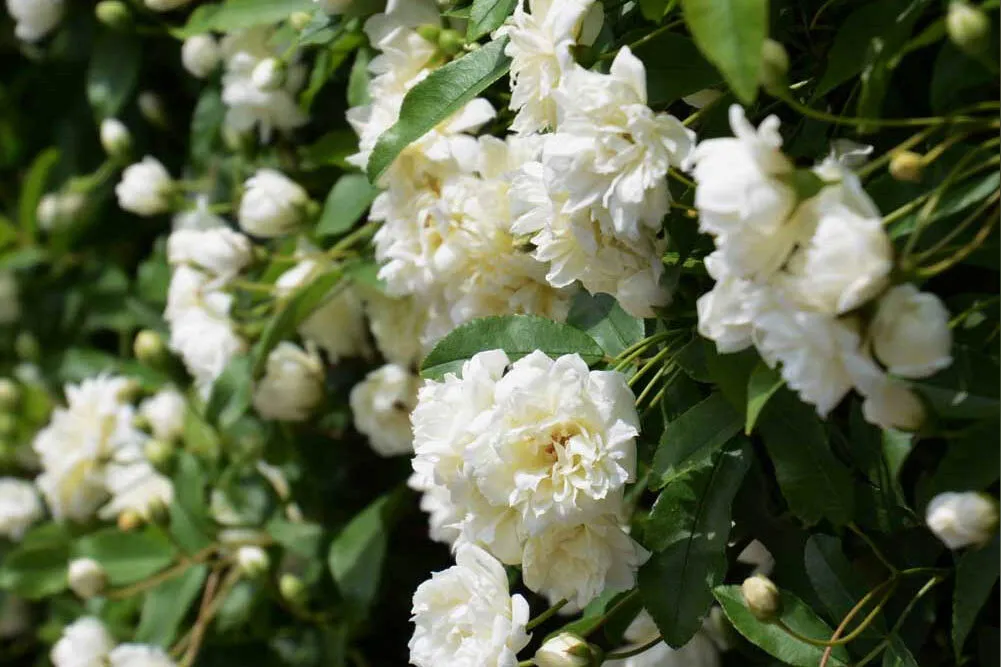
Climbing roses make great fencing plants due to their decorative blooms. Rosa banksiae is especially good as it has thornless stems and is semi-evergreen. In late spring, 'Alba Plena' produces clusters of small, double white flowers with a lovely perfume. This rose can grow to be very large, so is best chosen for bigger areas of fence that need covering.
Ipomoea purpurea 'Star of Yelta'
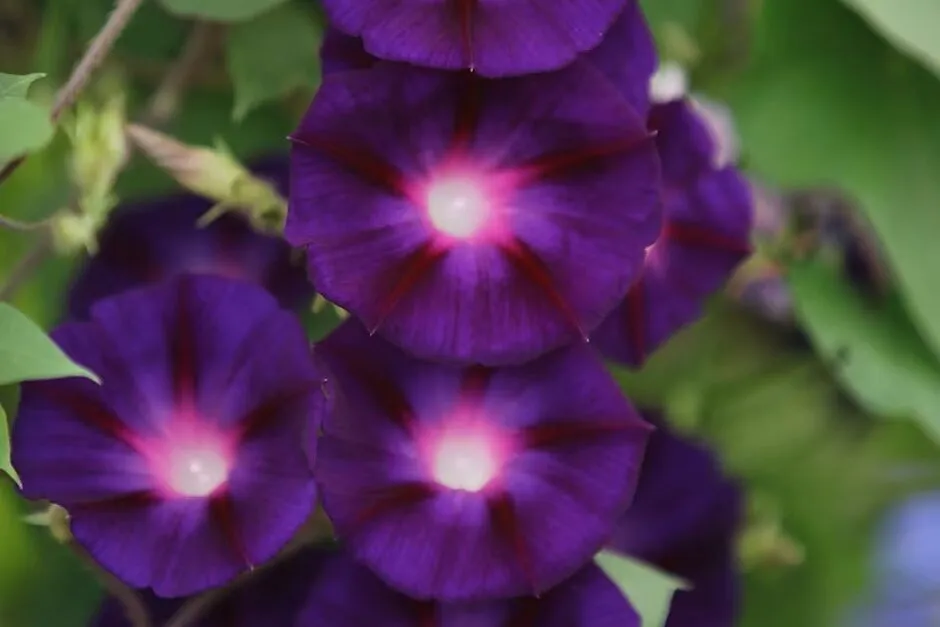
Ipomoea purpurea 'Star of Yelta', also known as morning glory, is a great choice if you're looking for something to cover a fence quickly. It's a half-hardy annual and produces trumpet-shaped purple flowers which open in the morning and last only one day. They're great for pollinators and make for quick and easy fencing plants.
Hydrangea anomala subsp. petiolaris
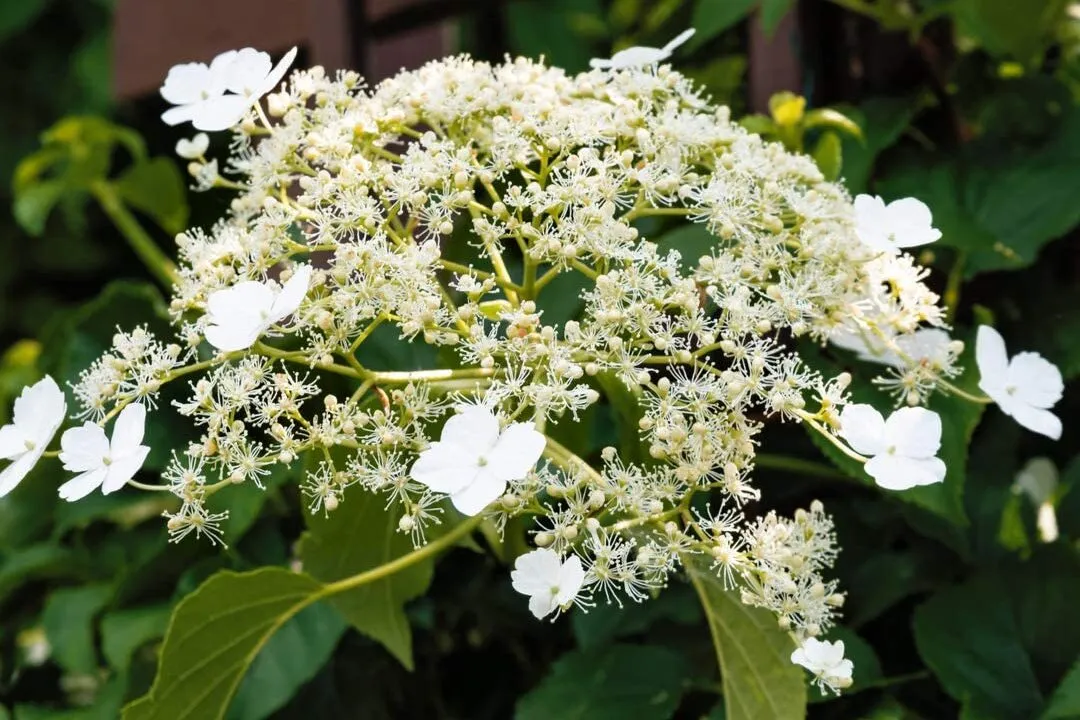
This hydrangea is the best flowering climbers for fence lines and they are tolerant of full shade too. As it is self-clinging, it is perfect for climbing directly onto fences and for adding interest to areas of the garden where you might be struggling to find things that thrive. The fresh green oval leaves turn yellow in autumn before falling and in summer there are displays of showy white flowers.
Shrubs for a fence line
Photinia 'Red Robin'

Photinia 'Red Robin' is an excellent plant for the fence line and for hedging. The colourful young foliage creates an attractive display and as they are evergreen theses plants are perfect for screening out an ugly fence all year round.
Ceanothus 'Skylark'
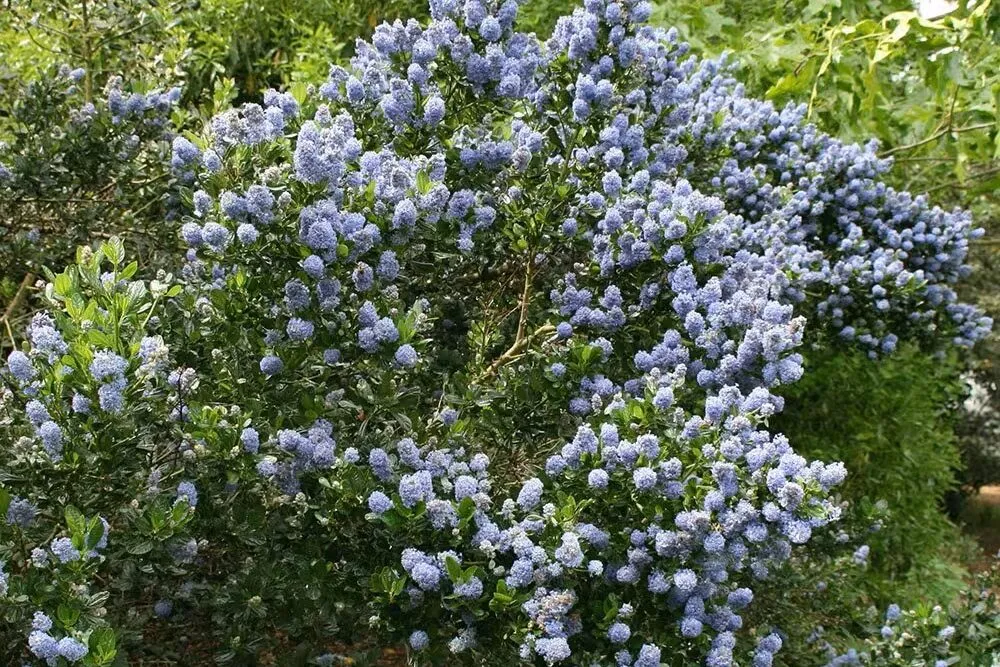
Ceanothus are the perfect shrubs for a fence line. Also known as Californian lilac, these evergreen shrubs produce clusters of deep blue flowers against glossy foliage. Ceanothus 'Skylark' flowers between May and June. These shrubs benefit from the protection provided by fences, so its a win-win!
Pyracantha 'Saphyr Rouge'
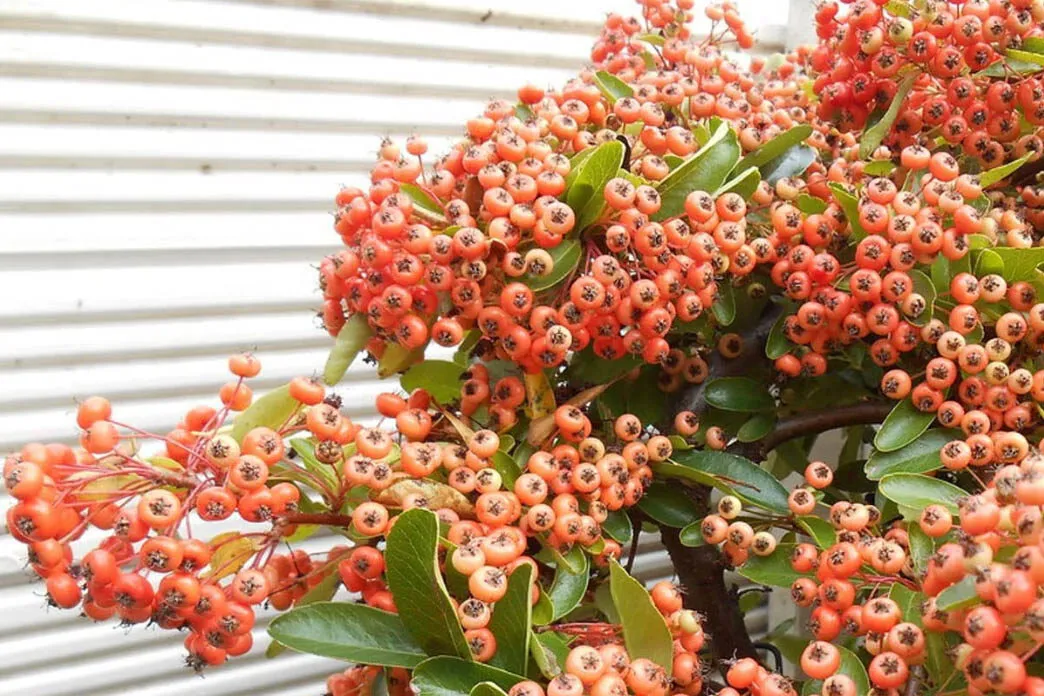
Pyracantha are another great group of fencing plants. In spring and summer 'Saphyr Rouge' produces masses of white flowers, similar to that of hawthorn and in autumn these give way to an abundance of orange-red berries. They work very well for training along a fence line and as hedging.
Euonymus japonicus 'Paloma Blanca'

Euonymus japonicus 'Paloma Blanca', or Japanese spindle is another good option for screening a fence. These shrubs are evergreen and only grow to about 70cm, making them easy to manage as a fence line plant. In spring, the leaves open cream and mature to a dark green which leads to a two-toned effect at this time of year.
Hydrangea macrophylla 'Early Pink'
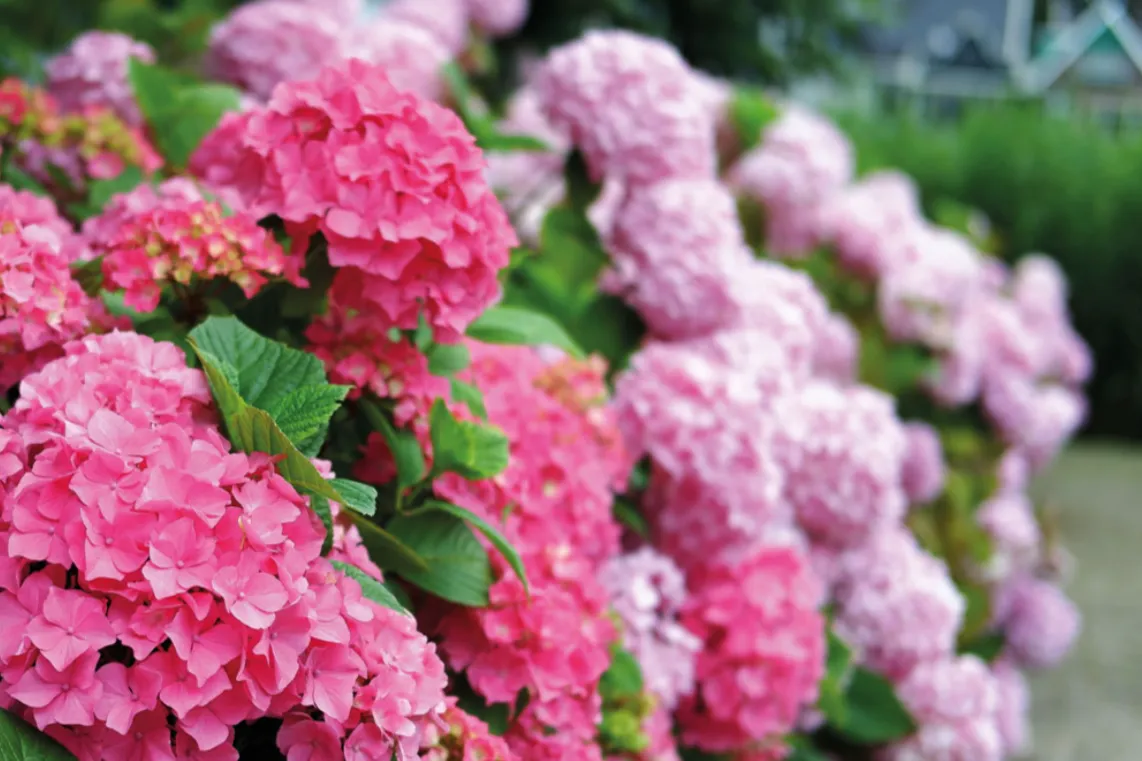
Hydrangeas are one of the best shrubs for the fence line as they enjoy shade so can be planted where other, more sun loving plants wouldn't thrive. This variety has deep pink flowers that will bloom from early summer, much sooner than many other varieties.
On acidic soils these blooms will become more mauve. The fresh green foliage will provide some nice autumn colours. Hydrangea macrophylla prefer a moist soil and are happy in a sunny or semi-shaded spot. They are fully hardy and will grow up to 1.2 metres.
What is the best plant to cover a fence?
This really depends on the size of your fence and space, the aspect of the growing space and at what time of year you want it to look good. If you're looking for overall coverage then something like ivy or Parthenocissus might be the right choice. If you're looking for something specifically decorative to add to the back of a spring or summer border then you may want to consider roses, clematis or jasmine.
There is no one-size-fits-all when it comes to choosing the best plants for a fence line as every garden is different.
How close to a fence can you plant?
For planting on a fence line, you should leave at least a 30cm gap between the fence and the plant, preferably closer to 45cm if you can. This is because both the plant and the fence need space to breathe, and the fence will cast a rain shadow at its base, meaning that your plants may not get enough water if they are planted too close.
Can you grow plants on your neighbours fence?
Not without their permission. According to BLB Solicitors 'you must not paint, repair or otherwise interfere with your neighbour’s fence without their permission. To do so would be causing criminal damage.'
So, if you want to grow plants up a fence in your garden, you must first check who the fence belongs to, and ask the owner whether they mind you growing plants up it from your side. If they say yes and the plants cause damage to the fence, you may be liable for repairing the damage.
Can you grow plants up a fence without a trellis?
Yes, it's very possible to grow some plants up a fence without the use of trellis. Some plants are self-clinging, so need no support to grow. These can be damaging to the wood though so you should always do some research before growing a self-climbing plant up your fence.
Another way of growing plants along a fence line without trellis is by using supportive wires. These can be attached at intervals along the fence and are useful for growing things like jasmine, honeysuckle or Trachelospermum.
Can I grow trees along my fence line?
It can be tricky to grow trees along a fence line as their roots will span very widely and need more space than other plants. It is also important to consider whether any branches will overhang into neighbouring gardens, which could cause disputes. However, you could try growing small trees or trained fruit trees along a fence line, provided that there is enough space for their roots at the base of the fence.
An unattractive fence is a disguised opportunity to introduce some beautiful climbing flora and fauna into your garden. Hopefully our roundup has introduced you to some exciting new plants to spruce up your fence with, and if your looking for more plant ideas, check out the best places to buy plants online here.
